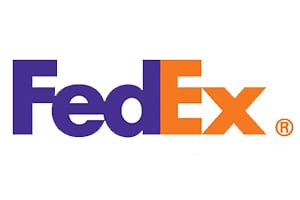 FedEx reported fourth-quarter revenues and earnings that fell short of expectations, the latter impacted by one-time charges related to pension accounting adjustments and a settlement with misclassified drivers in California, as well as the strong dollar and a drop in fuel surcharge revenue from lower oil prices.
FedEx reported fourth-quarter revenues and earnings that fell short of expectations, the latter impacted by one-time charges related to pension accounting adjustments and a settlement with misclassified drivers in California, as well as the strong dollar and a drop in fuel surcharge revenue from lower oil prices.
Fourth-quarter revenue was $12.1 billion, up 2.6% from $11.8 billion in Q4 2013 but below the analyst consensus of $12.2 billion. The net loss was $895 million or $3.16 per share, compared to net income of $780 million or $2.62 per share a year earlier. Adjusted net income, after backing out $2.2 billion related to the pension costs and $227 million paid to the California drivers, was $753 million or $2.66 per share, flat from the prior year, and just below the $2.68 per share consensus figure.
For the year, FedEx reported revenue of $47.5 billion, up 4.2% from $45.6 billion in fiscal 2013. Net income was $1.05 billion or $3.65 per share, down from $2.32 or $7.48 per share in the prior year.
Margin for FedEx Ground was negatively impacted by the company’s acquisition of GENCO and related integration expenses as well as increased self-insurance reserves, Alan B. Graf, FedEx’ executive vice president and CFO, told analysts. Without those expenses, Graf said, the ground segment’s margin would have been just slightly less than the 20% in Q4 of 2014.
FedEx plans to spend $1.6 billion of its $4.6 billion capital budget in fiscal 2016 building out its ground segment, to deal with increased demand for ecommerce deliveries.
“As you start building hubs and bringing things online … because we’re so highly automated, those investments are going to give us returns right away,” Graf said. “That’s why the capex is going up in 2016 and it’s entirely related to our increased investment in ground.” The capital spend is peaking this year and will drop 30%-35% in subsequent years, said FedEx Ground President and CEO Henry J. Maier.
FedEx Ground revenue increased 19% to $3.57 billion in Q4, as average daily volume increased 5%, primarily driven by growth in ecommerce. The average daily volume for SmartPost, Graf said, decreased by 1% due to reduction in volume from a major customer.
T. Michael Glenn, FedEx’ executive vice president, market development and corporate communications, said yields per package in ground, excluding SmartPost, increased 4.3% in Q4, excluding the fuel surcharge. He said the increase was driven primarily by this year’s expansion of dimensional weight pricing and other surcharges.
One major change noted in the call was that FedEx plans to merge SmartPost, a discounted service that uses the U.S. Postal Service for final-mile delivery, into FedEx Ground as of Sept. 1, lessening its reliance on the USPS and reducing costs. Graf said the company is launching new software that will enable FedEx to combine packages destined for a common delivery address. Rival UPS already has similar software in place.
“This increased delivery density enhances efficiency and productivity and profitability,” Graf said. “Dissolving a subsidiary and merging the business into ground will enable increased flexibility to leverage the strengths of both the ground and SmartPost networks.”
